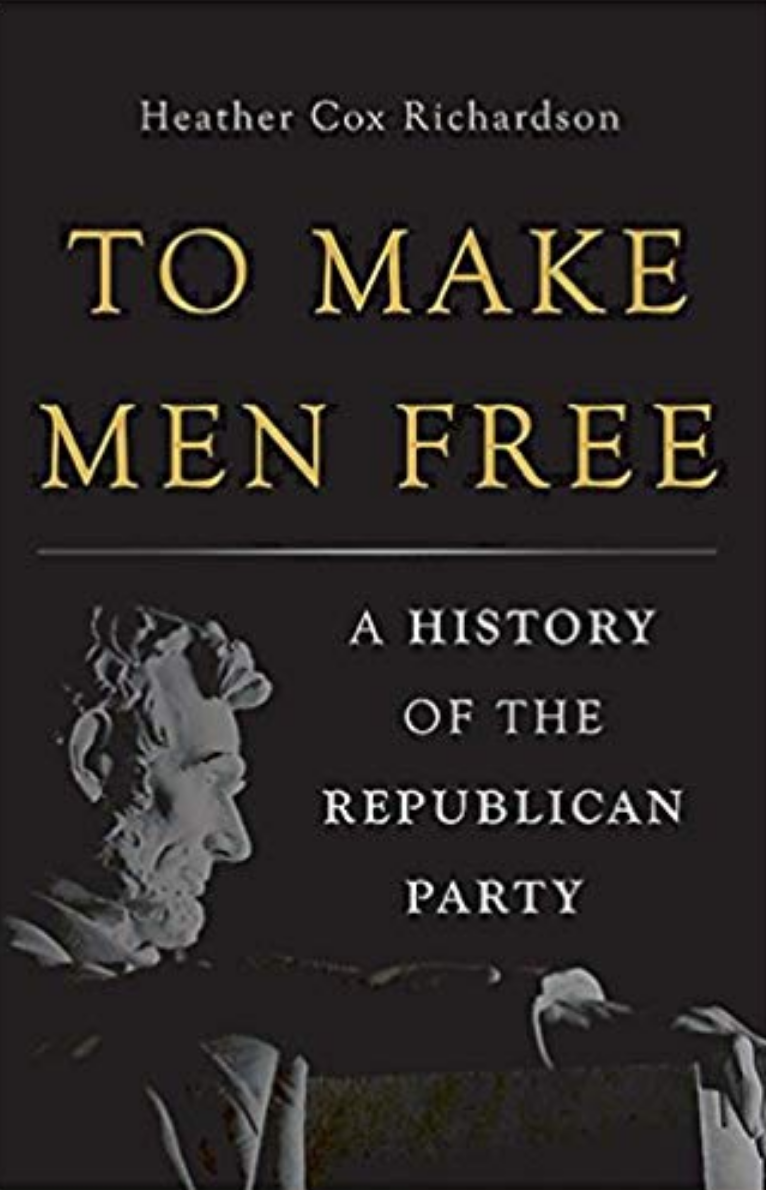ESSAY: For July 4, Let's Reflect on America's Eternal Divide: Equal Opportunity vs. Private Property
/Heather Cox Richardson and the Republican Politics of Sabotage
By Jim Swearingen
Land of freedom and opportunity, or of life, liberty, and property? While we often conflate these two descriptions of the United States, recent historical research reveals how these opposing camps help to explain our current political turmoil and why so many continue to support a compromised President.
In her 2016 history of the Republican Party, To Make Men Free, Heather Cox Richardson, American history professor at Boston College, and “Twitterstorian” celebrity, demonstrates Harry Truman’s axiom, “The only thing new in the world is the history you don’t know.” Richardson argues that the United States has always entailed a struggle between those who sought economic opportunity for all and those who would employ any political sabotage to restrict ownership of private property.
She documents a historical pattern of alternating Progressivism and economic Darwinism that has loosened restrictions on individual liberty, then promptly tightened them again to wring greater profits from the working classes and minorities. The origin of this recurring shift, Richardson argues, lies in a rift between our two founding documents— the Declaration of Independence and the U.S. Constitution.
Where many of us think of these as twin tablets brought down from Olympus by the Founding Fathers, Richardson documents a history of tension between the Declaration’s egalitarian principles and the Constitution’s property protections that have framed this contest between the haves and the have-nots throughout our history.
The reverence for private property spawned a grasping political ideology that has run from the ante bellum Southern Democrats to the Trumpster Republicans of today. Always woven into their policy justifications are depictions of the disenfranchised as ignorant, unruly, shiftless, and unworthy of supportive economic policies. In their worldview, attempts to ameliorate the plight of the disadvantaged reward stupidity, undermine initiative, and can lead to communism.
Richardson finds this strand running strongly through the Republican Party that she profiles, but she points to three presidential exceptions to the Republican taste for protecting the wealthy: Abraham Lincoln, who at the party’s outset represented a newly organized resistance to the spread of slavery and centralized plantation wealth; Teddy Roosevelt, who strayed from his patrician roots to divide monopolies, attack urban blight, and tax the rich; and Dwight Eisenhower, who used the power of the Executive to enforce integrated public education, expand Social Security, and attempt a national health care system.
In preparing Americans to be active citizens, these presidents became pariahs to anti-democratic elites who sought to manipulate government toward their own avaricious ends. In spite of these Executive efforts, following each extension of federally promoted opportunity for the masses, Republican industrialists, Wall Street financiers, or supply-side capitalists reasserted their dominance. Using a Darwinian justification that only the strong should survive, they dismantled business regulations, federal investments in the economy, and taxes on the rich.
Richardson also describes previous occasions when pro-business Republicans deliberately sabotaged the economy to hurt Democratic chances of ably running the country, squandered Democratic surpluses to break the federal government, and appropriated the language of the oppressed to claim victim status for themselves when their lavish wealth was taxed. Accusations of “class warfare,” “mob rule,” and “socialism” stem back to the 19th century, as do exhortations that the poor should work their way out of desperation while lousy working conditions, low wages, and dismal education prevented it.
Richardson also shows that it is no accident that modern Republican policies resemble the politics of Dixie. The belief that wealth should pool in the hands of the powerful while universal rights to fair and decent living conditions constitute a threat to freedom is closely aligned with those of ante bellum slave owners. Any attempt to usurp property rights by redistributing lands or taxes in a more equitable fashion defied their interpretation of the democratic canon. “Liberty” meant that private property had to be protected from the redistributionist policies of leveling egalitarian legislation — in short, communism.
But how does this help us understand Trump’s rise? If we accept that Trump is simply the tool of an older, exclusive wing of the Republican Party that has always sought to protect the wealthy from regulations and taxes, our current period of history is more recognizable. As he lavishes more tax breaks on the obscenely wealthy, Republicans employ the classic rallying cry about federal investment in the economy and ameliorative legislation for the lower classes — socialism.
What is unprecedented is a compromised Chief Executive cavorting with Soviet operatives to promote anti-Socialist policies. Humbler saboteurs have been executed for less. But as long as the president delivers property protections to the radical Republicans, these modern day Confederates tolerate his treason. Thus, the Age of Trump echoes a recurring American theme: No betrayal of democracy is too outlandish to feed the metastasizing wealth of the powerful few.
Whatever the egalitarian aspirations of the 116th Congress, these anti-democratic forces will fight mercilessly against them. The question remains whether a new leader can emerge from the ashes of the Grand Old Party — or, far more likely, the Democratic Party — to reclaim the mantles of liberty and equality.
Jim Swearingen is a Minneapolis-based writer.










